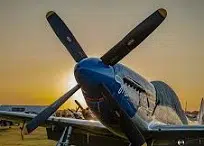 The notion of propela comes from the English word propeller . The term is used in several Latin American countries to name the propeller that is part of the engine of a ship or aircraft .
The notion of propela comes from the English word propeller . The term is used in several Latin American countries to name the propeller that is part of the engine of a ship or aircraft .
To know what a propeller is, therefore, we must focus on the idea of a propeller . This is the name given to the group of fins or blades that rotate around an axis and that, with their operation, enable the propulsion of a boat or an airplane .
The propeller fins have a curved shape, although there are certain differences between the distances that exist at the beginning and end of the blade. This design means that, when rotating, there is also a speed discrepancy between the fluid (air or water) on each face and, therefore, different pressures . Thus, a force arises that is perpendicular to the plane of rotation and that serves to propel the vehicle.
That said, we must place special emphasis on the importance of the rotation and curves of the propellers when generating the movement of the vehicle. If they were designed with angles of ninety degrees in all their vertices with respect to the longitudinal axis of the latter, their rotation would not generate the same results at all, so it would not be useful for the propulsion of a ship.
The propeller, in short, is a propulsion mechanism that allows a large part of the power of an engine to be converted into a thrust force . It has a variable number of blades twisted in the same way and spaced equally around the core located on the thrust axis. The movement of the propeller involves combining rotation with translation along an axis.
It is important to mention that the first propellers as propulsion tools emerged several centuries before Christ . Over time, the characteristics of the shaft and blades were optimized, taking into account the features of the ships.
 To be more precise, there is evidence that the propeller had already been created around the 5th century BC, although at that remote time the shape of the propeller was more similar to that of a screw than to that of a paddle. Another difference is that they were then used to move or lift water .
To be more precise, there is evidence that the propeller had already been created around the 5th century BC, although at that remote time the shape of the propeller was more similar to that of a screw than to that of a paddle. Another difference is that they were then used to move or lift water .
It was only in the 18th century that the propeller began to be used for ship propulsion, largely thanks to the tests promoted by the Swiss physicist and mathematician Daniel Bernoulli . Early tests included placing paddles with a sixty-degree rotation; Its shape was much more uniform from end to end than current propellers, and this offered lower performance because it meant that the system could not generate as much force.
Precisely, the efforts generated in each part of the propeller were explored in 1878 by the English hydraulic engineer William Froude with his theory of the elements of the blade . Thanks to this series of discoveries and studies, the doors were opened to the design of various types of propellers for use in the maritime field.
Among the changes that can be seen throughout the evolution of the propeller from its first forms to the present day, we can also highlight the different materials that have been used, since some of them had not been developed several centuries ago. Currently, bronze is prioritized (especially in its manganese , aqualloy and aluminum alloys), in addition to stainless steel, thanks to the fact that it is very resistant to corrosion .
